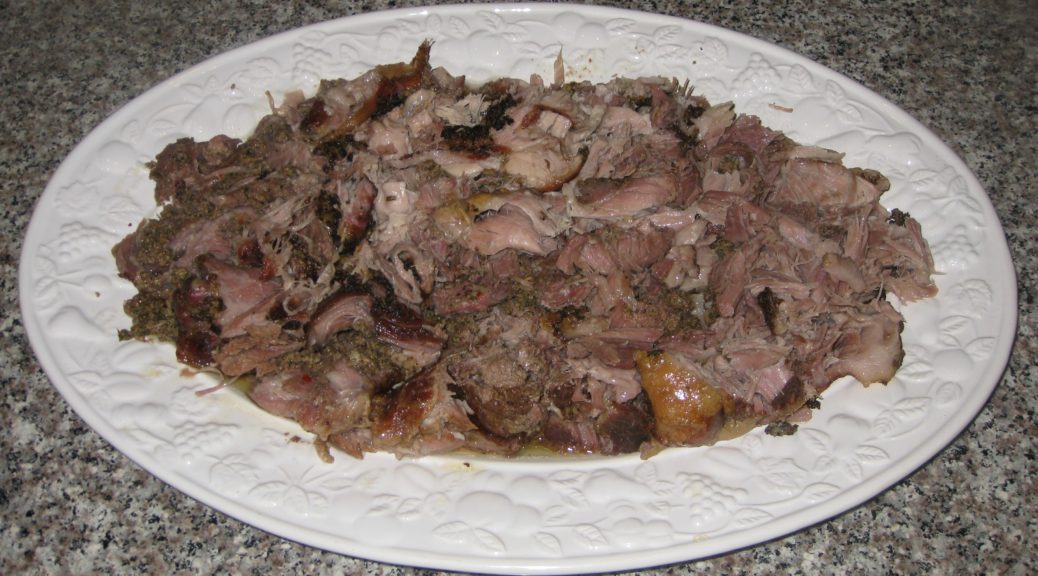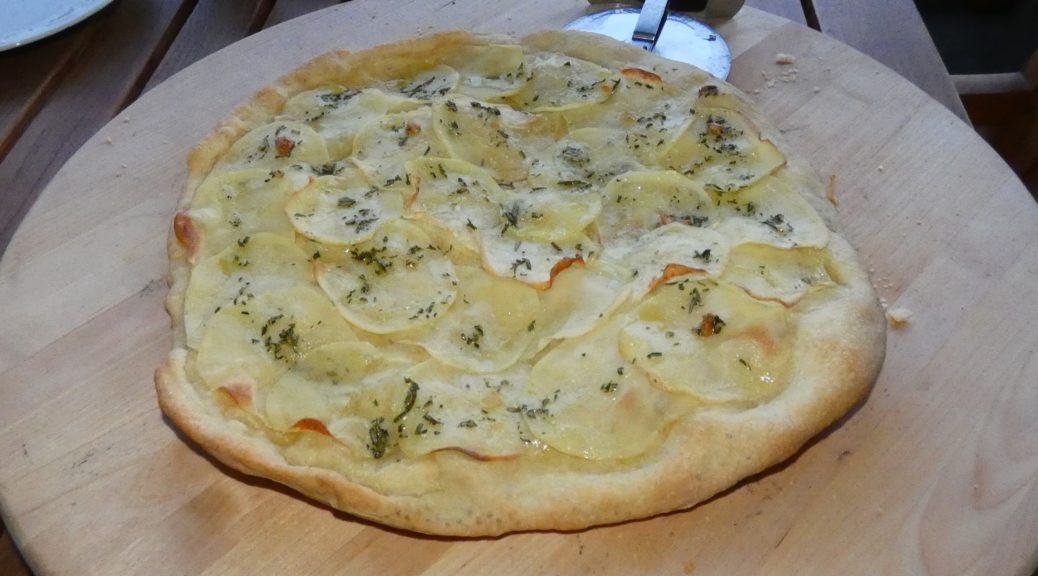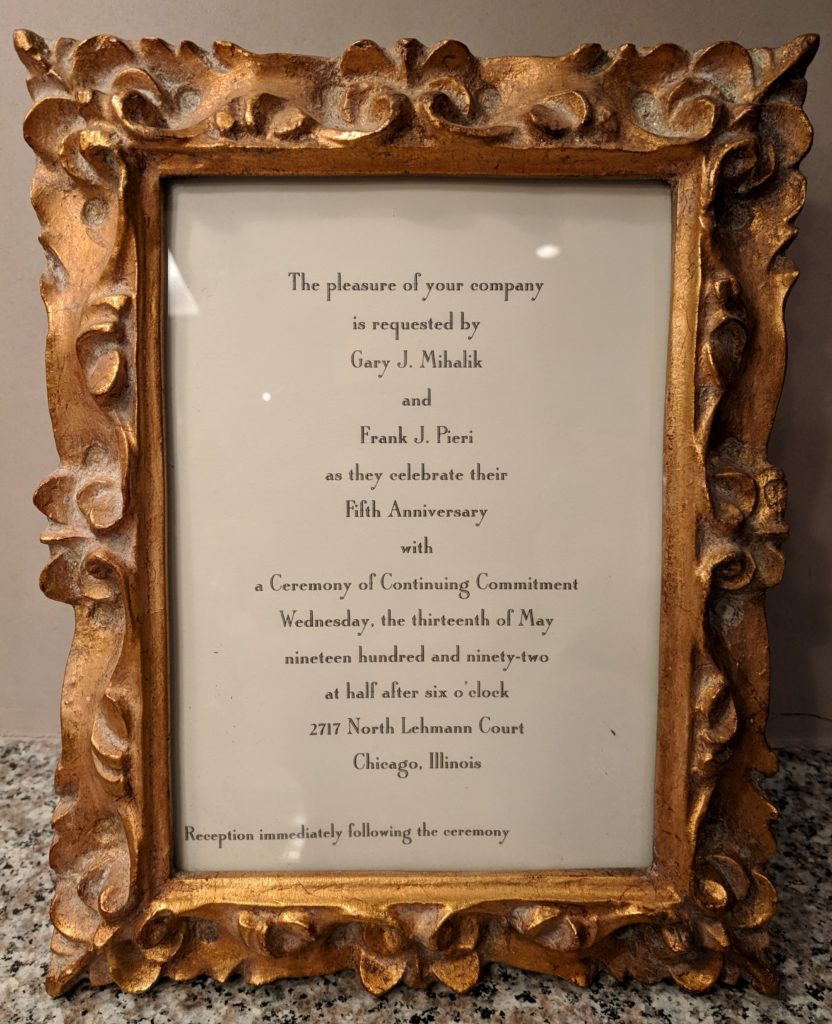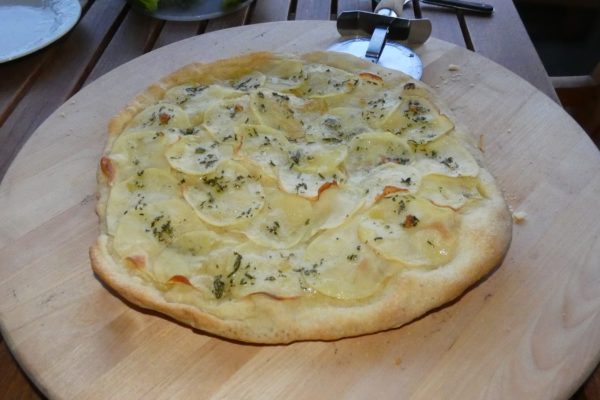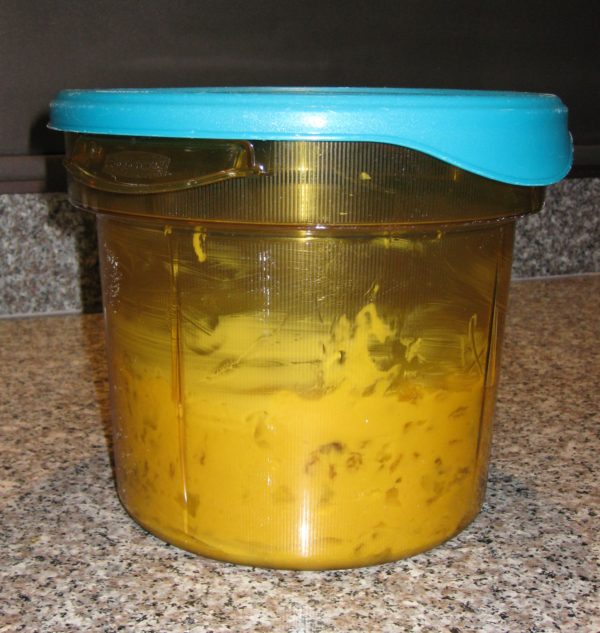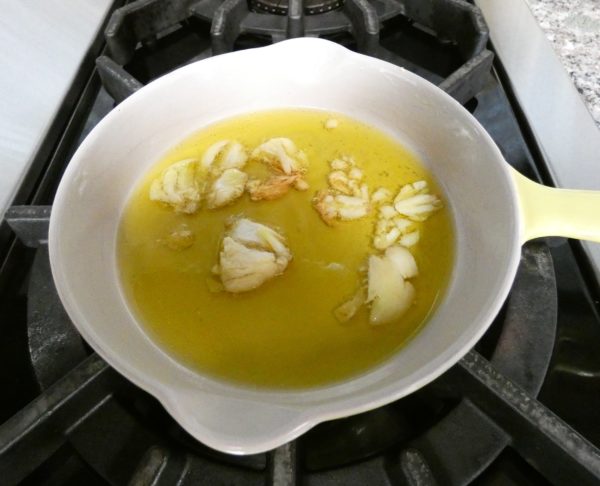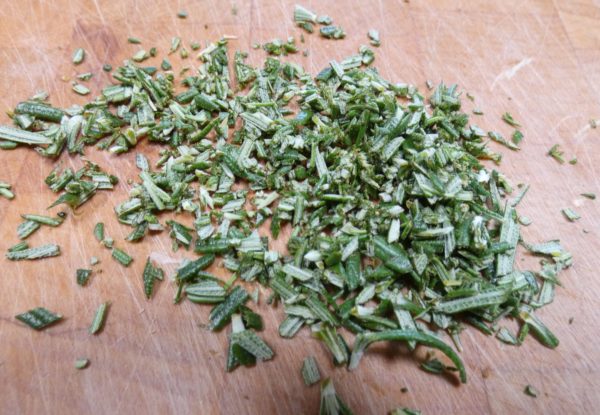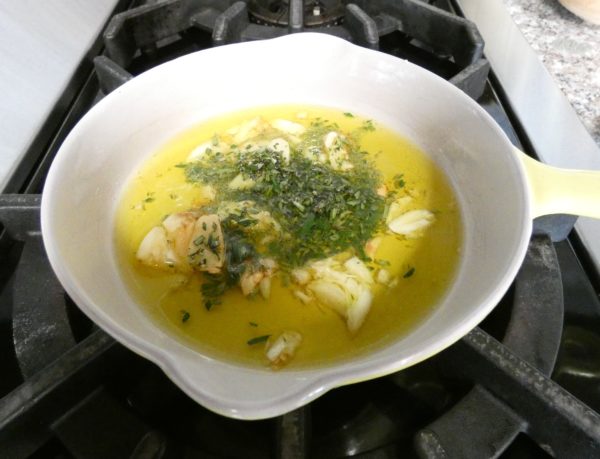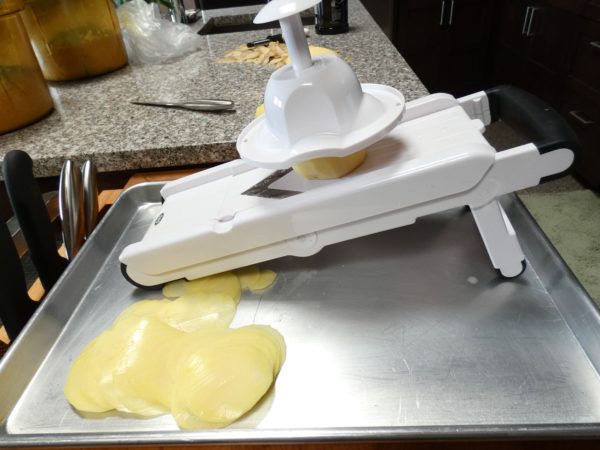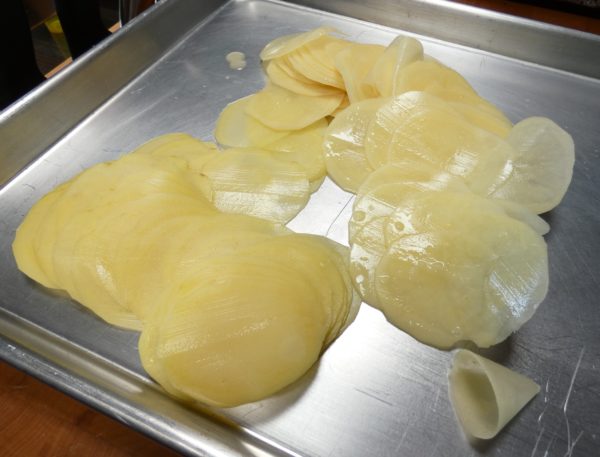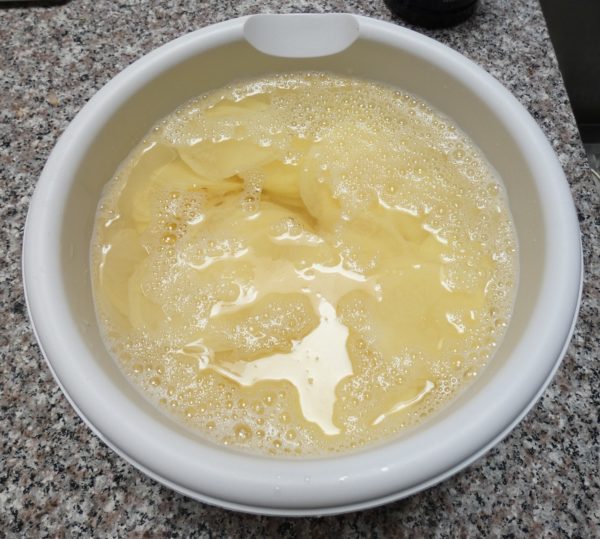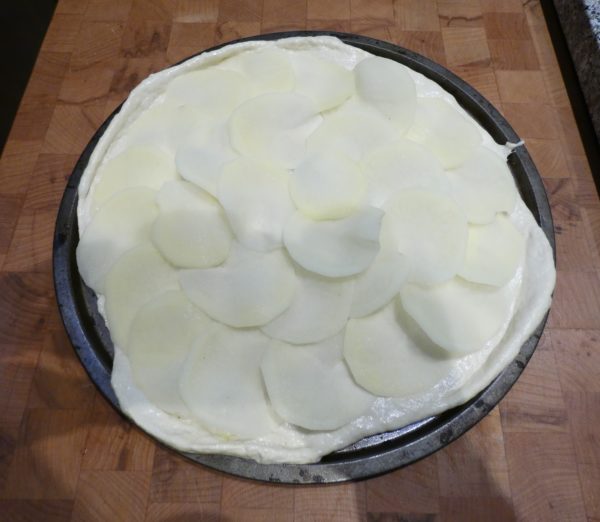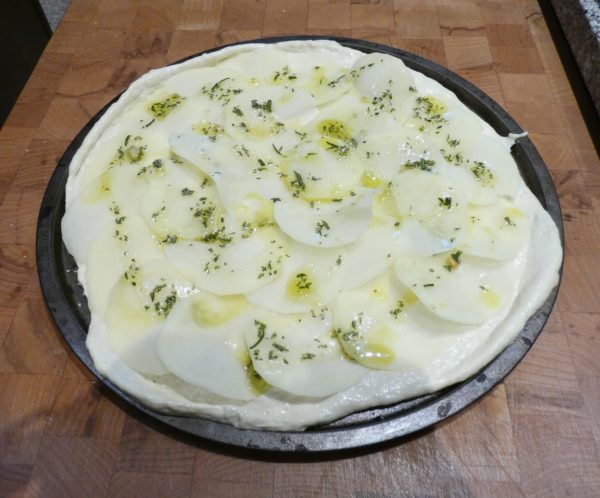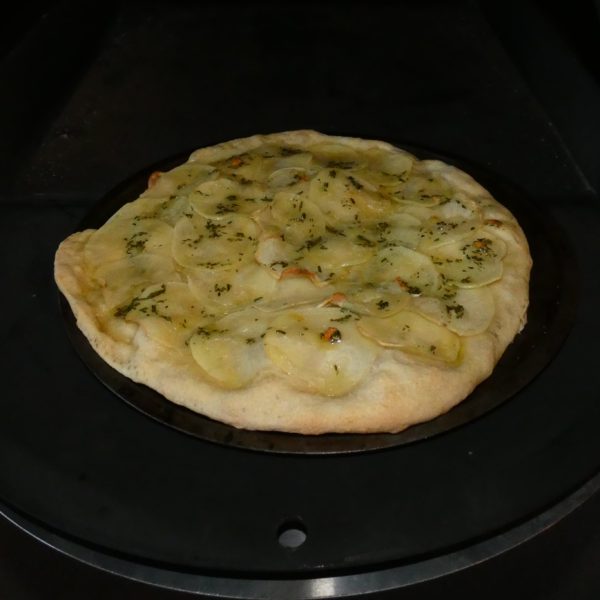February 14, 2020
Porchetta is roast pork, but it’s no ordinary roast pork. In its most traditional form, it is made from a whole pig, well-seasoned, and slowly roasted.
Porchetta can be found throughout Italy at festivals and street fairs, such as the one in Bagni di Lucca that I attended this past August.
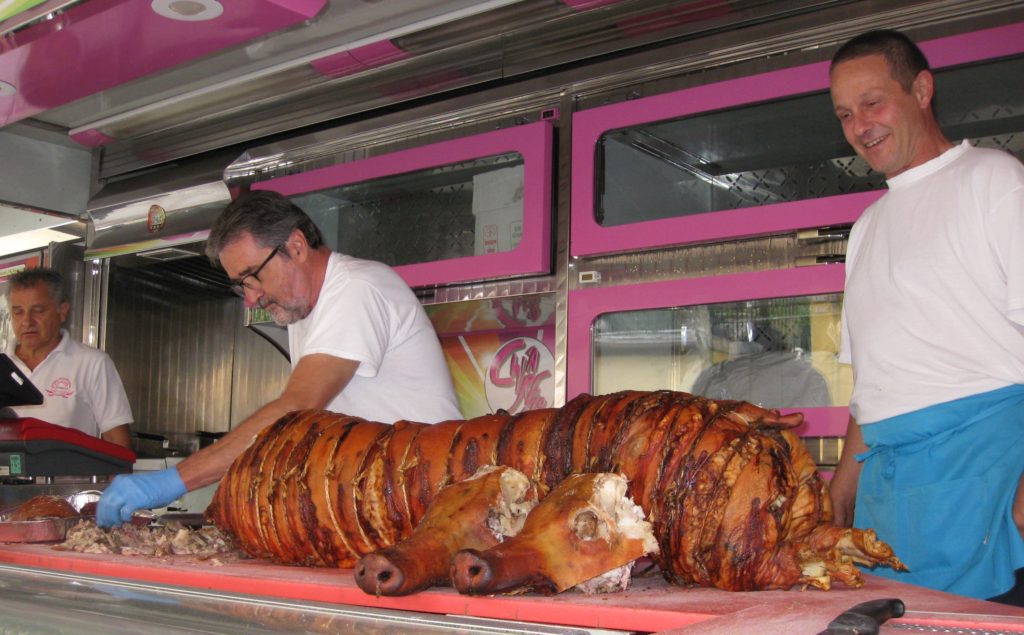
Though there is some debate, Porchetta probably originated in Lazio in Central Italy. Lazio is the region where Rome is located.
Follow us on your social media platform of choice
Seasonings vary with the region and often include some combination of garlic, rosemary, fennel, and black pepper. Some regional variations include chopped entrails or liver in the mix.
Perhaps the most unusual version of Porchetta that I’ve encountered is made at the Italian Culinary Institute in Stalettì, Calabria. It is seasoned with salt and a large amount of truffle puree!
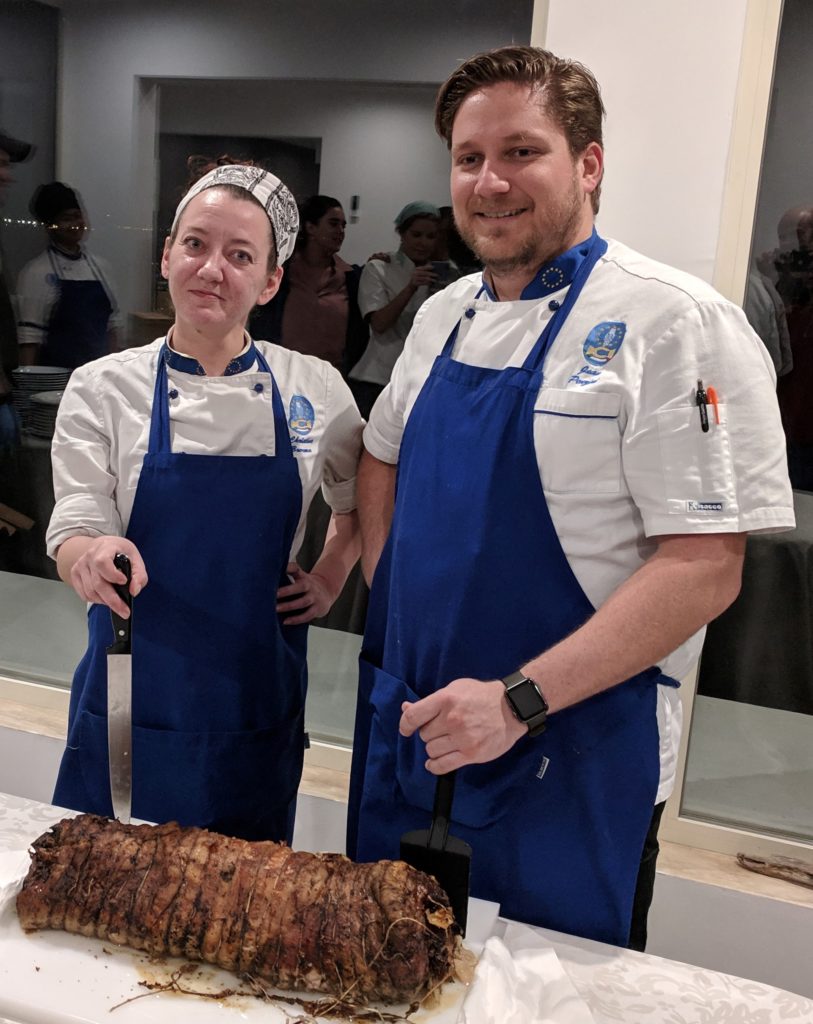
Most of us are not going to roast an entire pig which raises the question of what cut or cuts to use. This is especially important as much of the mouth-feel of porchetta derives from the combination of fatty and lean meat inherent in using an entire pig.
One solution, that makes for an elegant presentation, is to roll a slab of pork belly around a lean pork loin and tie it. This strategy allows one to cut neat slices that contain both lean and fatty meat.
Join our mailing list and you’ll never miss a recipe again!
Another solution is to use a cut of meat that inherently contains about 20% fat. A pork shoulder fits the bill nicely. The bone must be removed and the thickest parts of the meat butterflied before being seasoned and tied. This cut of meat doesn’t create consistent slices as does the pork-belly-wrapped-around-a-pork-loin method. It does, however, create supremely succulent meat, more so that the pork loin that’s encased in the pork belly.
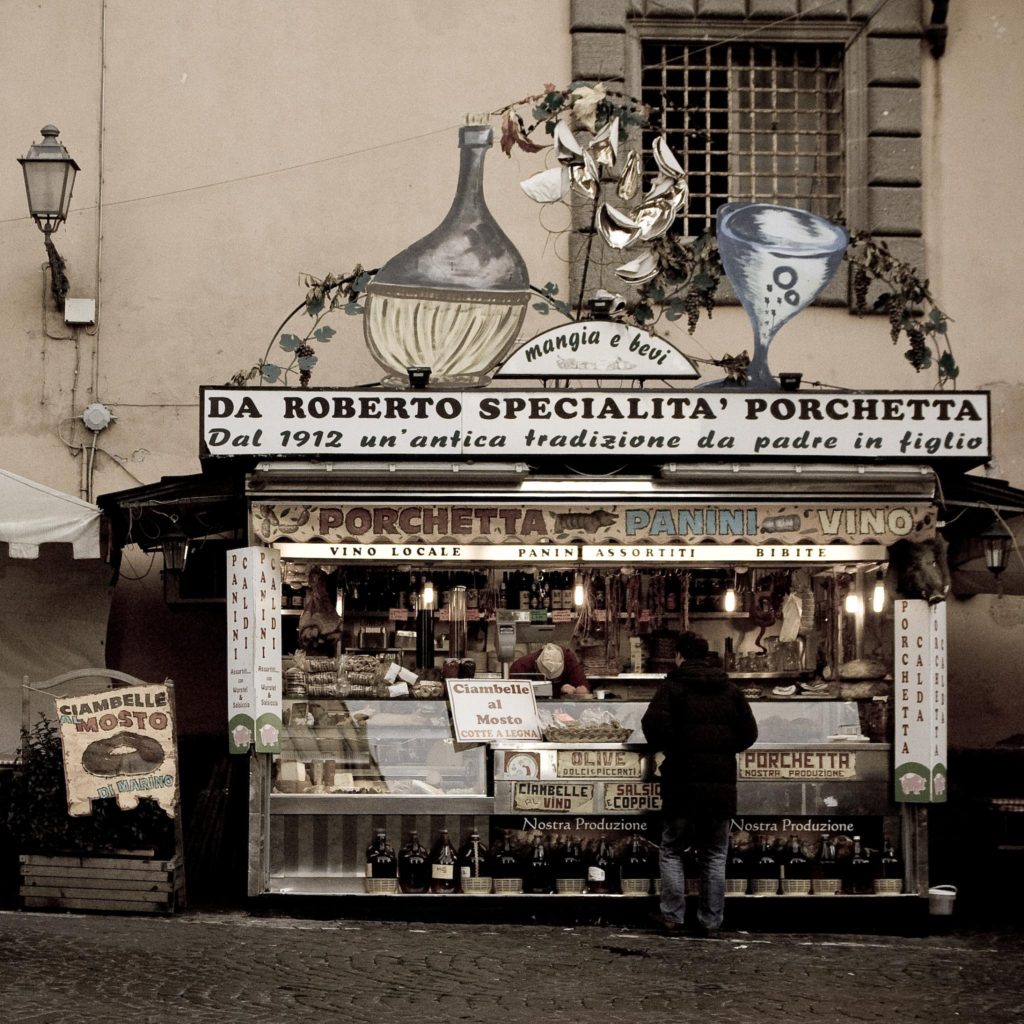
I lean towards the “pulled pork” version of porchetta, so slices aren’t really important to me. I always opt for the boneless shoulder method and pull the cooked meat apart in large chunks. Given the chance, though, I’d like to try a whole pig.
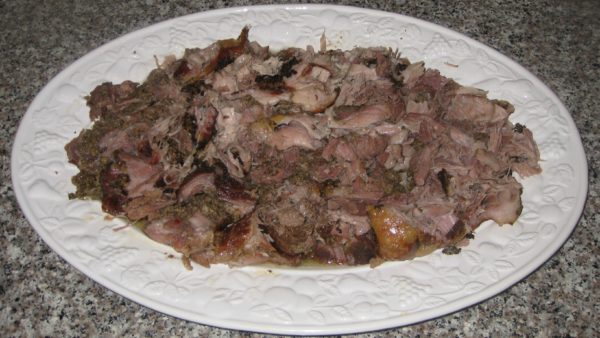
| Prep Time | 1 hour |
| Cook Time | 10 hours |
| Passive Time | 2 days |
| Servings |
persons
|
- 1 boneless pork shoulder butterflied, (approximately 7 pounds)
- 8.5 grams fennel seeds (3 ½ teaspoons)
- 40 grams garlic chopped (7-8 cloves)
- 32 grams Coarse sea salt (2 tablespoons)
- 9 grams black pepper freshly ground (1 ½ tablespoons)
- 5 1/2 grams fresh rosemary minced (3 ½ teaspoons)
- 6 grams red pepper crushed (3-4 small dried red chiles, crumbled)
- 1-2 tablespoons olive oil
- 2 1/2 grams fennel seeds (3/4 teaspoon)
- 10 grams garlic chopped (1-2 large cloves)
- 3 grams Coarse sea salt (½ teaspoon)
- 3 grams black pepper freshly ground (1 ½ teaspoons)
- 1 1/2 grams fresh rosemary minced (1 ½ teaspoons)
- 190 ml white wine (3/4 cup)
Ingredients
For the initial seasoning
Final seasoning and cooking
|

|
- Crush fennel seeds in a mortar. Reserve.
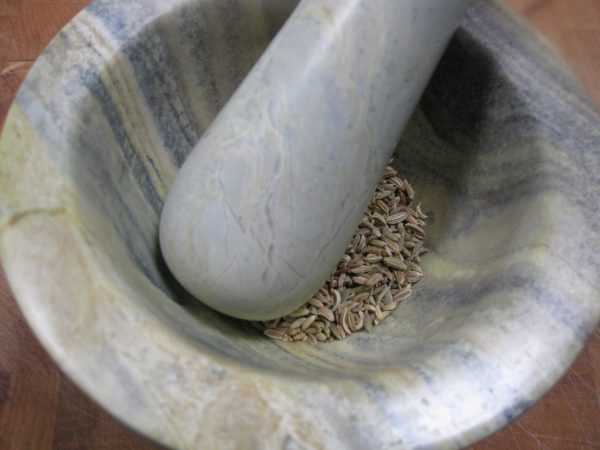
- Puree the garlic and olive oil in a small blender jar.
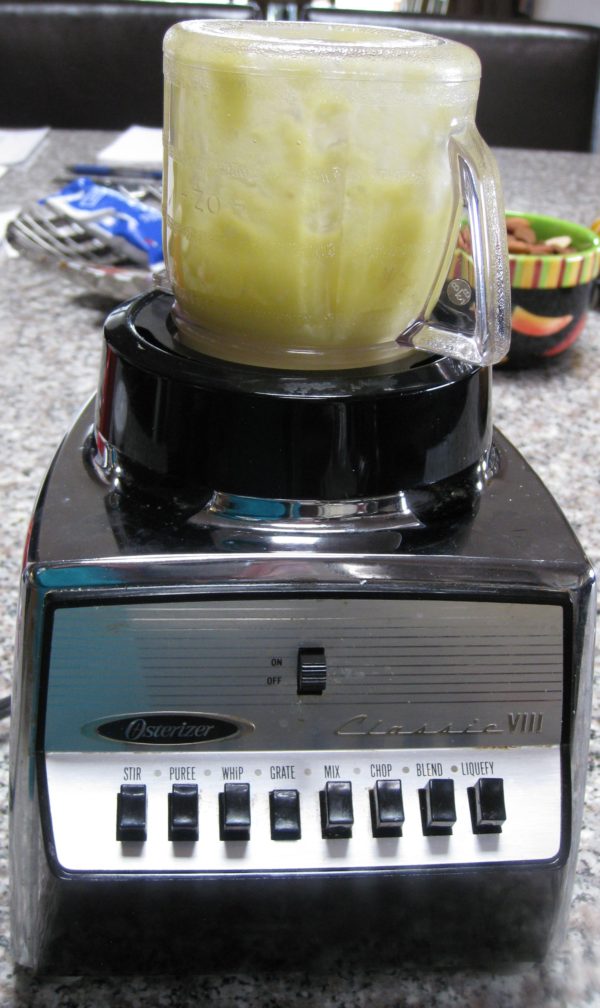
- Add the crushed fennel seeds, salt, black pepper, rosemary, chile and enough olive oil to make a paste.
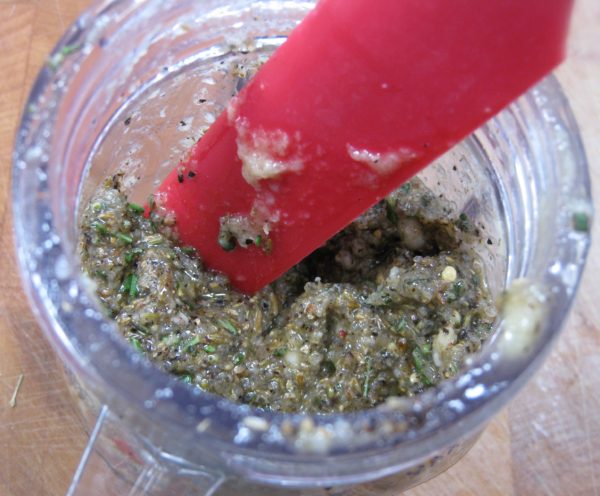
- Rub the paste over what will be the inside of the roast once it is rolled and tied.
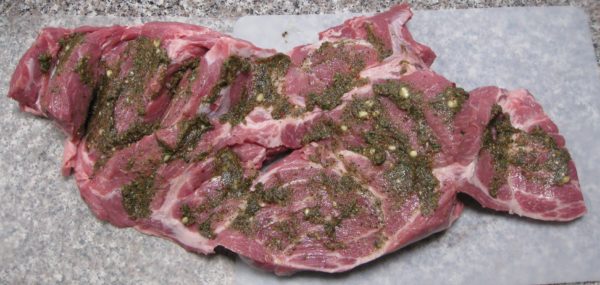
- Roll up roast and tie with butcher’s twine.
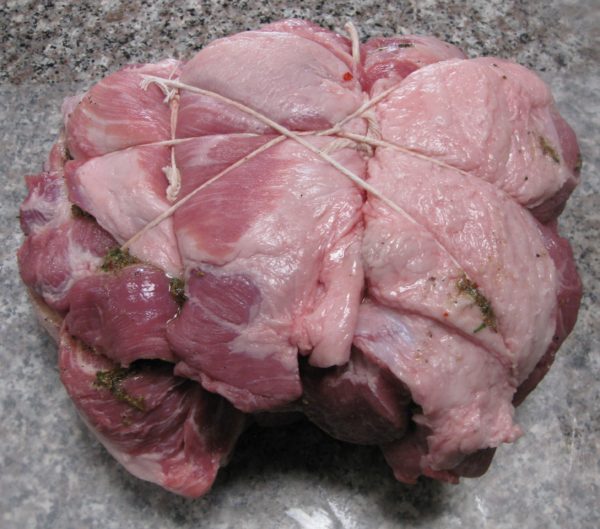
- Put the tied roast, fat side up and seam down, into a non-reactive roasting pan and cover with plastic wrap.
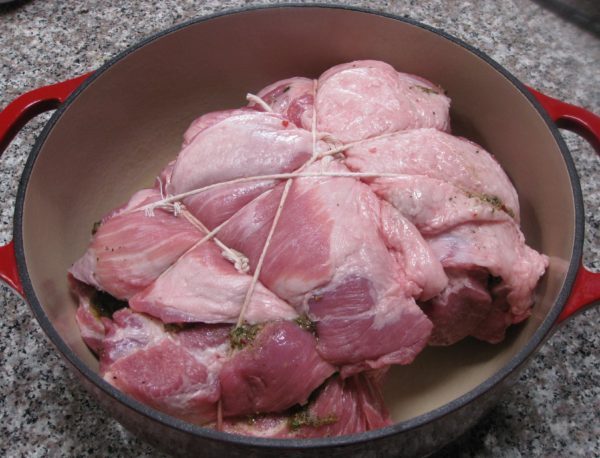
- Put the cover on roasting pan (or cover tightly with aluminum foil) and refrigerate for 2 days.
- Remove the pork from refrigerator about 60-90 minutes before roasting.
- Using a mortar and pestle, grind the fennel seeds.
- Add garlic and salt to the fennel and crust into a paste.
- Add black pepper and rosemary. Combine well.
- Rub spice mixture over the top of the roast.
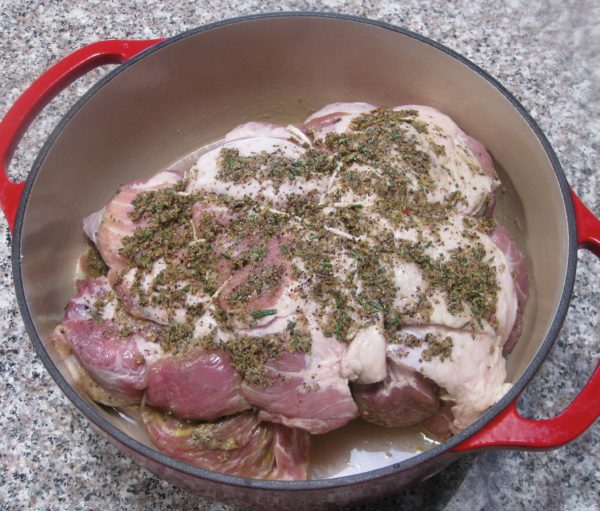
- Pour the white wine into the bottom of the roasting pan.
- Cover the pan and roast at 250°F, for 10 hours, occasionally basting with pan juices after about 5 hours.
- Uncover the pan for the last hour of roasting. If necessary, but usually not, add a bit of water to the pan.
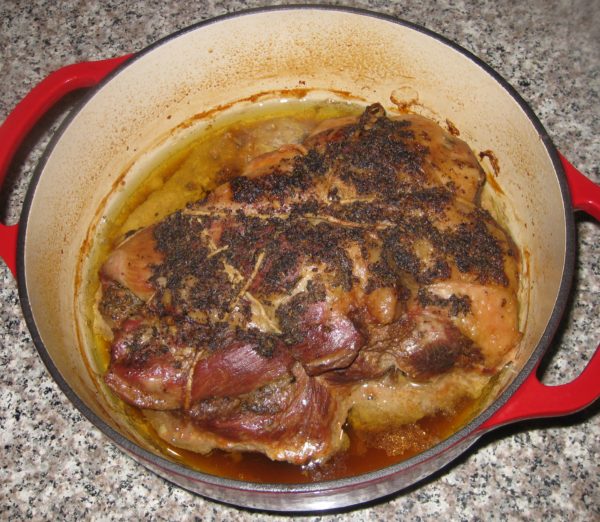
- Remove the roast from the roasting pan and place it on a serving platter. Pull the roast into chunks.

- Skim the fat from the pan drippings. Drizzle the pan drippings over the meat.
Copyright © 2020 by Villa Sentieri, LLC. All rights reserved.

